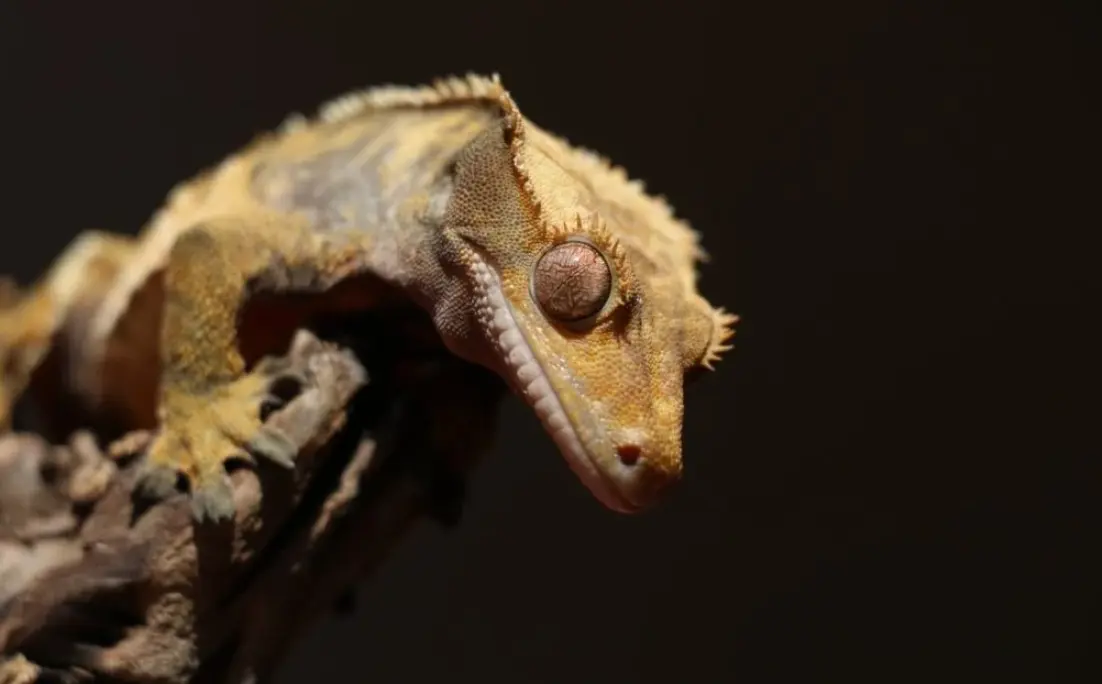Crested geckos are wonderful pets with relatively simple care, but it’s really important to know the right practices for their health and happiness.
Here’s a breakdown of the do’s and don’ts of crested gecko care:
DO’S
- Enclosure:
- Size: Provide a tall enclosure (minimum 18x18x24 inches) for adults. Crested geckos are arboreal and love to climb.
- Furnishings: Include plenty of branches, vines, and foliage for climbing, hiding, and security.
- Substrate: Use a moisture-retaining substrate like coconut fiber, reptile bark, or bioactive mixes. This helps maintain humidity.
- Temperature and Humidity:
- Warmth: Maintain a temperature gradient with a warm side (72-78°F) and a cool side (68-75°F). Nighttime temperatures can drop a few degrees.
- Humidity: Keep humidity levels between 60-80%. Mist the enclosure daily or twice daily.
- Diet:
- Crested Gecko Diet (CGD): Offer a variety of high-quality CGD flavors as their primary food source. This is a nutritionally balanced powder you mix with water.
- Insects: Supplement with gut-loaded insects (crickets, dubia roaches) dusted with calcium + D3 powder, 1-2 times a week.
- Handling:
- Gentle: Handle with care! Supervise children during handling. Crested geckos can be skittish, and they may drop their tails if stressed (tails do not grow back).
- Short sessions: Keep handling sessions brief initially and gradually increase the duration as they adjust to you.
- Other Essentials
- Water: Provide a clean, shallow water dish.
- Cleaning: Spot clean daily. Deep clean the enclosure every month.
DON’TS
- Cohabitation: Don’t house multiple males together (they’ll fight), and be cautious about even pairing females long-term, as there can be dominance issues.
- Direct Sunlight: Never place the enclosure in direct sunlight as it can quickly overheat.
- Excessive Heat: Do not use heat rocks or heat mats, which can burn your gecko. Overhead heating is safer.
- Neglecting Humidity: Low humidity can cause shedding problems and health issues.
- Overfeeding Insects: Too many insects can unbalance their diet and lead to obesity.
- Vitamin Deficiencies: Don’t forget to dust insects with a calcium supplement with D3. You can also install an UVB light.
- Rough Handling: Don’t squeeze or grab your gecko roughly. Support their whole body during handling.
Hope this helps…
FAQs
Q: What do crested geckos eat?
Crested geckos are primarily frugivorous, meaning their diet consists mainly of fruits.
Offer a variety of commercially available crested gecko diets, supplemented with fresh fruits like mashed bananas, mangoes, and papayas.
Q: How often should I feed my crested gecko?
Juveniles should be fed daily, while adults can be fed every other day. Monitor their weight and adjust the feeding frequency as needed.
We have a detaild guideline for this, you can check that out from this link.
Q: What are some common signs of illness in crested geckos?
Lethargy, loss of appetite, abnormal shedding, and difficulty breathing are some common signs of illness in crested geckos.
If you notice any of these symptoms, seek veterinary care promptly.
Can’t Find Your Answer?
Statement
Information you find here is completely accurate. Our writer carefully checks and verifies all the facts. We review the information every month and update it with the latest details.
Ethics
If you think the information written here is not entirely accurate, or if there is any misinformation, please feel free to let us know instantly. We are constantly striving to keep all articles updated.

